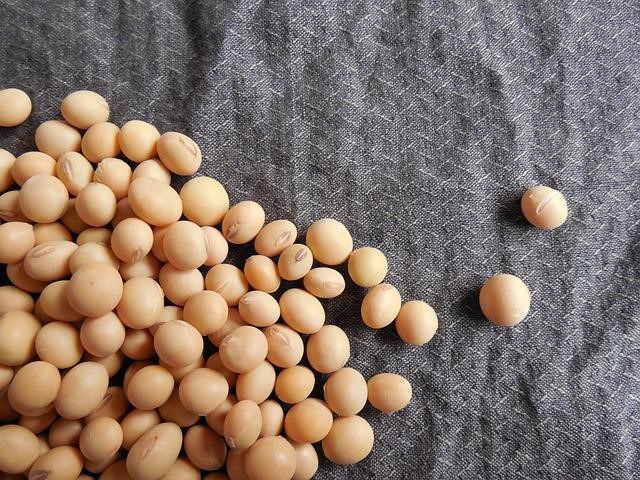Soy is gradually gaining popularity and marking its position as a staple in the US. According to one statistical report, Americans consumed 11.4 million metric tons of soy in 2021.
Although soy foods have multiple benefits that endear them to American diners, versatility is arguably soy’s most popular trait. For one, the soybean plant has multiple applications inside and outside the kitchen.
So, which soy food properties make soy foods and the soybean plant versatile? Keep reading to learn more about the soybean’s multiple qualities, why it is more than a mere legume, and the versatile soy products available on the market.
1. The Soybean Is Highly Nutritious
Soy is a nutrient-packed food product containing every dietary nutrient, from fatty acids to digestive fiber. So would even argue that soy is a superfood; one report defines superfoods as food compounds offering maximum nutritious and other health benefits. You can read about soy’s health benefits later in this article.
Besides being considered a superfood, soy has a commendable nutrient density. A food source’s nutrient density refers to the volume of nutrients you get from consuming the food source compared to the calories you must consume for nutritional significance. In simpler terms, nutrient density is the opposite of empty calories.
The soybean’s most popular benefit is that it is a plant-based complete protein source, containing all nine essential amino acids; it contains 44%-49% protein. However, the legume is also rich in polyunsaturated fatty acids (omega-3 fatty acids), calcium, potassium, iron, magnesium, thiamine, and phosphorus. Moreover, soy is a rich vitamin source containing B complex vitamins, folate (vitamin B9), and vitamins C and E.
Therefore, soy’s versatile nutritional profile means you can enjoy soy foods by themselves or combine them with various accompaniments to hit your daily dietary intake requirement for various nutrients. Moreover, the legume’s nutrient density means you do not have to eat large portions of soy foods to hit the daily dietary intake recommendation.
2. Soy Foods Are Ideal For Meat-free Diet
The number of Americans on a meat-free diet is constantly growing. One statistical survey report shows that 5% of Americans identify as vegetarians, while 2% identify as vegan.
Moreover, a second report shows that over half of young Americans aged 24-39) identify as flexitarians. Flexitarianism, or a casual vegetarian diet, entails eating predominantly plant-based foods while including meat in moderation. Another important group to consider in the meat-free diet space is pescatarians, or individuals who eat a predominantly plant-based diet but include fish as their only animal protein source.
Americans’ reasons for adopting a meat-free diet include enhanced physical health, weight loss, animal welfare, and ethical concerns about diet and environmental impact. Nonetheless, soy foods are a substantial animal protein alternative, regardless of the reasons for adopting a meat-free or casual vegetarian diet.
Textured soy foods like soy sausages, soy burger patties, and soy chunks feature a similar flavor and texture to meat, making the transition to a meat-free diet easier. Eateries across the US, including popular fast food joints, feature soy food as meat-free options on their menus.
3. Soy Has Numerous Proven Health Benefits
As stated earlier, soy is a superfood, and superfoods have health benefits transcending nutrient intake. Besides a high nutrient density, the soybean contains phytochemicals, including isoflavones, phenolic acids, and flavonoids, that help combat various health conditions.
For starters, emerging research studies establish a link between soybean consumption and reduced risk of hormonal cancer (breast and prostate cancer). One research study established a link between the isoflavone content in soy with a 30% breast cancer risk reduction.
Isoflavones have properties similar to estrogen, the primary female hormone. While the popular opinion is that isoflavones increase estrogen-like effects, the phytochemicals may enhance or block estrogen’s effects, depending on the body’s conditions.
Estrogen promotes cell growth in breast tumors, but isoflavones can inhibit estrogen effects, lowering cancerous cell proliferation. Consequently, a second study concludes that soybean consumption reduces breast cancer recurrence, besides reducing breast cancer risk in healthy individuals.
Besides breast cancer, one study shows that the phytochemicals in soy, including isoflavones, have a cytotoxic (death-inducing) effect on prostate cancer cells. However, further research on soy foods’ effect on prostate cancer is necessary.
Also, one study review associates soy consumption with improved cardiovascular health, including lower cholesterol levels. Nonetheless, consult your doctor before taking soy foods to attenuate any health conditions.
4. Diverse Soy Food Options
Adding soy to your diet is the easiest thing in the world, given the many available soy food options. For salads, you can opt for non-fermented, unprocessed soy foods like edamame (whole soybean) and soybean sprout. Tofu and soy milk are versatile soy foods you can enjoy individually or pair with other dishes.
Fermented soy products like Miso and Tempeh are also culinary delights that absorb flavors from other ingredients and function as ingredients in main dishes or snacks. Soy-based condiments like soy sauce and teriyaki also enrich your culinary experience. Therefore, options are limited when adding soy foods to your diet.
5. Soy Non-food Uses
Besides being a super ingredient, soy has multiple applications outside the kitchen. The legume has numerous industrial applications, including rubber, fiber, plastics, solvents, adhesives, and dyes.
Soy is also a sustainable animal feed source, popular among US farmers. Also, the legume is easy to cultivate for food and non-food use due to its adaptability to diverse climates and environments.
Conclusion:
The soybean has multiple applications inside and outside the kitchen, making it versatile. Soy’s versatility makes soy foods adaptable to most dietary requirements and ensures that people have affordable nutrient-rich food with minimal environmental impact.

